A year on from when the Auckland Anniversary floods swept through Māngere, residents - many who remain living in flood-prone areas - are still suffering from its aftermath.
On 27 January 2023, Te Ararata stream overflowed and decimated homes along its banks, with more than 160 homes marked as fully or partially uninhabitable at the time.
While Auckland Council says most of those properties have been repaired, some families are still living in compromised homes after the flood damage, and others are anxious about future risks.
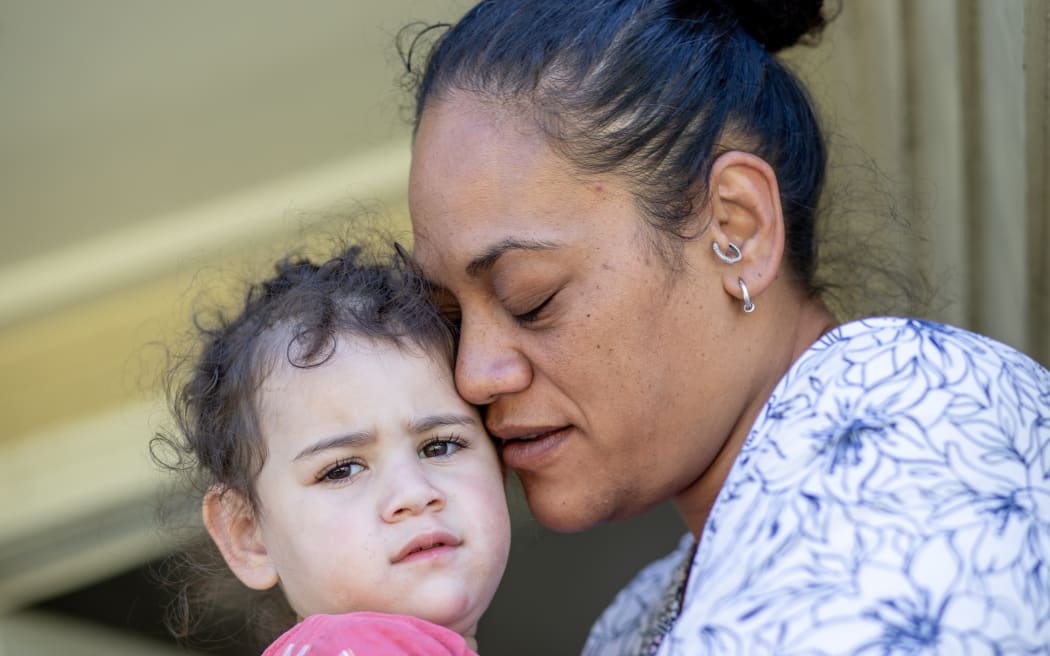
This Kainga Ora resident says her children have been continuously sick living in the flood-damaged property. Photo: RNZ / Marika Khabazi
A mother of two young children living in a Kāinga Ora home on Molesworth Place, a street that was inundated a year ago, still remembers vividly when the rising waters came up to her doorstep.
"We packed our bags and then once we had everything ready, we were like, 'Oh my gosh we're gonna be trapped', so we had to walk out in waist-high water, with a bag over our head, like holding it up, and with a toddler and a dog ... to get out to safety," said the mother, who did not want to be named.
The family moved back to the house a week after the floods as it was white stickered and deemed liveable by Auckland Council.
However, the resident said the foundations of the house had been soaked, and much of the insulation underneath the house was water damaged and dislodged.
Her partner said some of the flooring had also crumbled "like weetbix" from the moisture, and left a hole in one of the bedrooms.
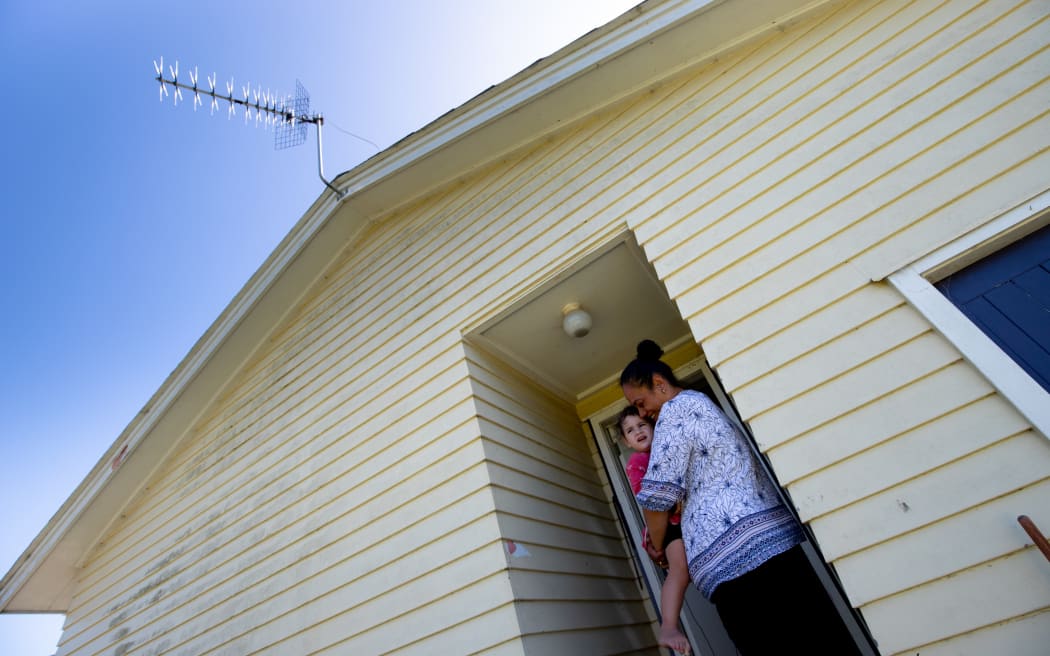
This Kainga Ora resident and her family are still in a home in Māngere that was flooded last year. Photo: RNZ / Marika Khabazi
The resident said her two-year-old daughter and 6-month-old baby had been getting sick frequently over the past year.
"With that insulation gone it has created I think more mould in the house, it has made it more colder, and that all contributes to my children continuously being sick over summer, autumn, all the way till now."
She was frustrated Kāinga Ora had not fixed these issues, despite her many requests for help over the past year.
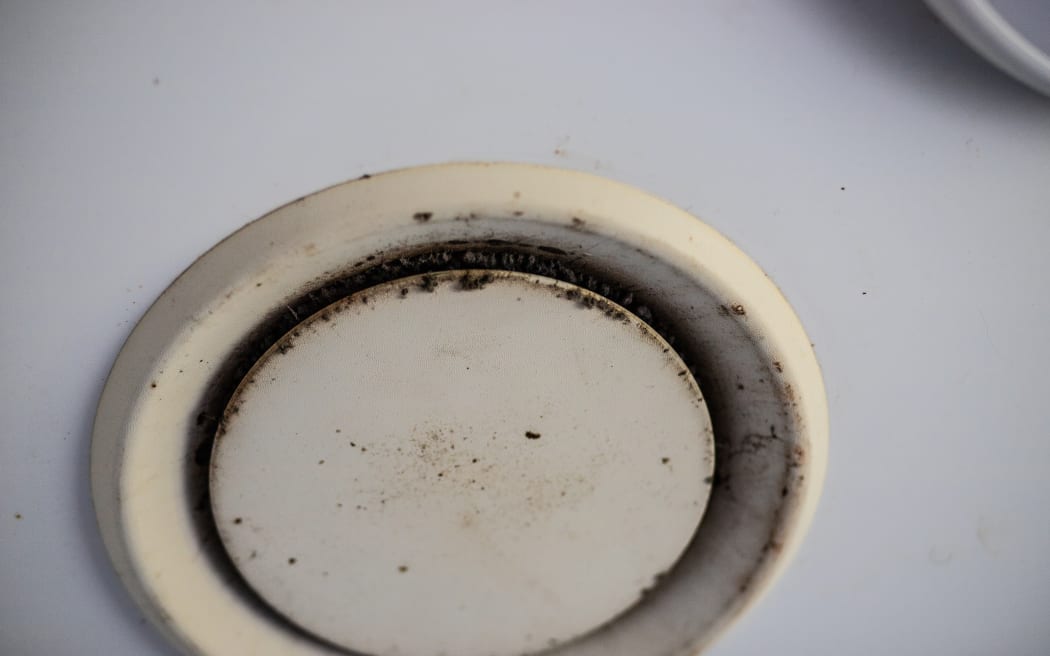
An extractor fan in the Kainga Ora resident's home is covered in mould. Photo: RNZ / Marika Khabazi
"Time goes by and nothing happens, we're left in the lurch with nothing done about it, and it's just like complaints, complaints, complaints…and we have to do the following up, we have to keep saying when is the insulation getting replaced, I feel like why is it our job to keep on top of them…they're not keeping to what they're saying."
Kāinga Ora told RNZ it was aware of the dislodged insulation but claims to have put it back in place. It denied any water damage to the insulation.
It said it was aware of the flooring problem in the bedroom, and would repair it soon.
Nearly a third of the 684 Kāinga Ora homes that suffered moderate to severe damage during the floods were in Māngere - and the agency said not all of these homes were given a placard by Auckland Council.
Kāinga Ora said it was expecting to have completed all repairs on its homes that were repairable by the end of this month, and that it had moved 89 families to other homes.
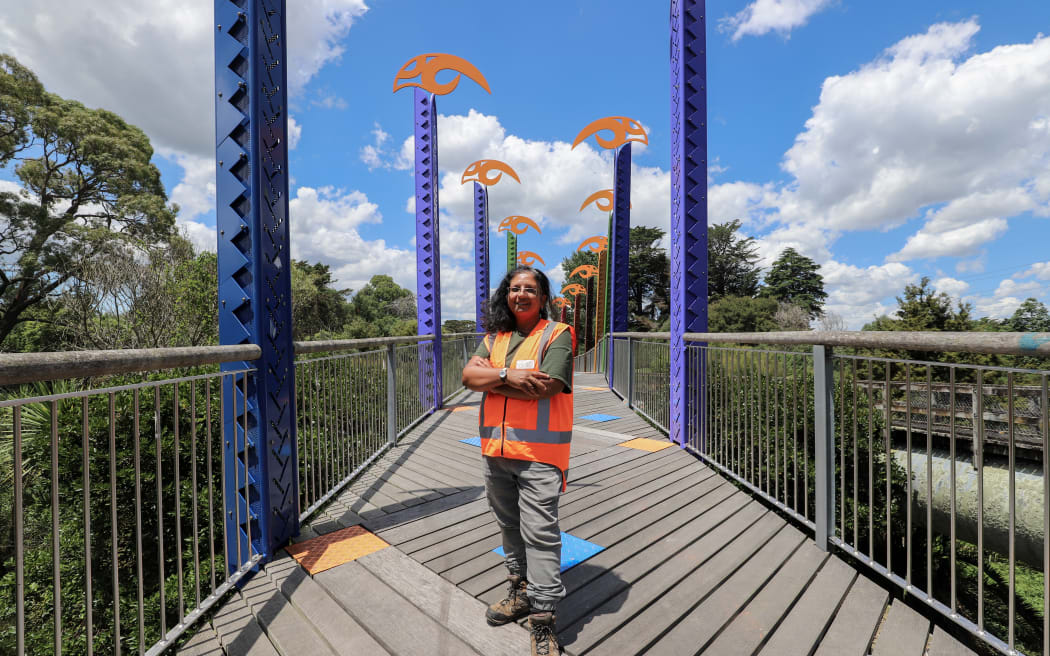
Pragna Patel is a volunteer for Te Ararata stream team - a local group working on ecological restoration of the stream, doing planting and raising awareness among residents. Photo: RNZ / Marika Khabazi
Pragna Patel is a volunteer for a group helping to restore the Te Ararata stream and is all too aware of the challenges for residents living near the stream, and some on a flood plain.
She said said those affected include renters, Kāinga Ora tenants and owner-occupiers.
"They gave examples of their basements being flooded, they're experiencing poor health as a consequence of the mould, they don't know how to move forward with that.
"There's a few elderly residents that were so affected by the floods, and again from a respiratory point of view as an older person, not a safe place for a person to live anymore, so they've moved out to a rest home."
From one flood-prone property to another
Kathleen, 63, and Allan Beazley, 72, lived in a rental on Paine Place in Māngere and lost everything when the floods came up waist-high in their home - destroying furniture and precious photo albums.
About three months after the flood, the couple were offered to move back into the property, which their landlord claimed to be repaired.
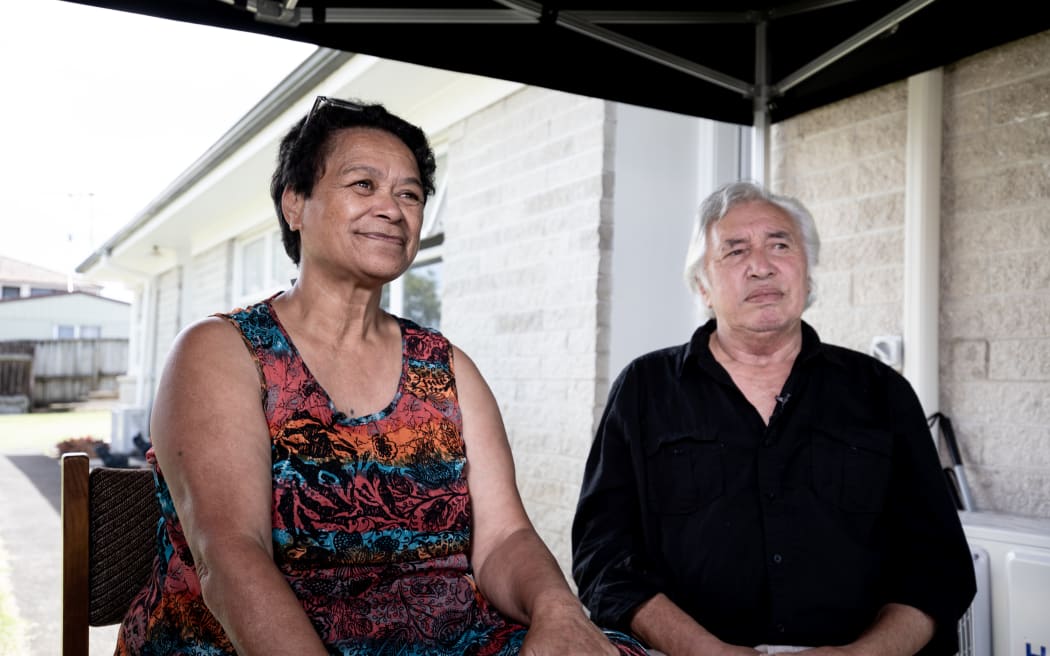
Kathleen and Allan Beazley lost everything in the floods last year, and says their former landlord offered to have them move back into the obviously still unsafe property shortly afterwards. Photo: RNZ / MARIKA KHABAZI
But the Beazleys said what they saw was unliveable.
"The doors were still waterlogged, puddles were still on the floor, the vinyl was lifting as soon as you lifted furniture up, the walls were just painted over, so there was no … you could see there was no removal of anything ... to have it worthy for anybody to live in," Kathleen said.
"Whoever passed that inspection and said it was okay, is very questionable as to how could they do that?"
The couple stayed with whānau for much of the year, and it was not until September that they found their current rental in Māngere Bridge.
Kathleen said it was not easy finding a place that did not have stairs, and was close to their workplace, Māngere College.
While the Beazleys are overall content with their new place, it was a shock for them to find out only recently that this house was also flooded last January, and remains in a flood-prone area.
Their lawn mower man told them the new place had been flooded as much as a metre high.
"This is the mower man telling us, the landlord should've let us know the risk of the water, every time it rains here now, we make sure to get our car to high ground," Allan Beazley said.
"The last place we had to swim out of, and if this place floods again, swim again."
The Beazleys pay $590 rent for this two-bedroom home and said they can only hope for the best.
Meanwhile, uncertainty looms over the future of housing in Māngere.
On Pito Place, 19 Kāinga Ora homes on a floodplain earlier marked for redevelopment are now being demolished.
Kāinga Ora said it was waiting for further assessments to decide how the land should be used in the future.
Auckland Council's Healthy Waters said it was designing improvements to the Māngere catchment area, and had increased the frequency of cleaning the catchpits from once a year to twice a year.
General manager Craig McIlroy said it had already made improvements at the Mahunga Road causeway culverts, including dredging and increasing capacity.
Meanwhile, community volunteers like Patel hope dto see more talk about flood resilience for Māngere.
"There's not been enough talk about change, for me, I would like the level of talk to be upped, and there has not been enough forum for talk about change."
Patel said she wanted to see measures such as the widening of the stream, the creation of detention ponds around the stream to take some of the flow, and better maintenance.
"We know from the investigations after the flooding that there were certain pinch points where there were blockages and the level of maintenance on the storm water systems were not up to scratch."


